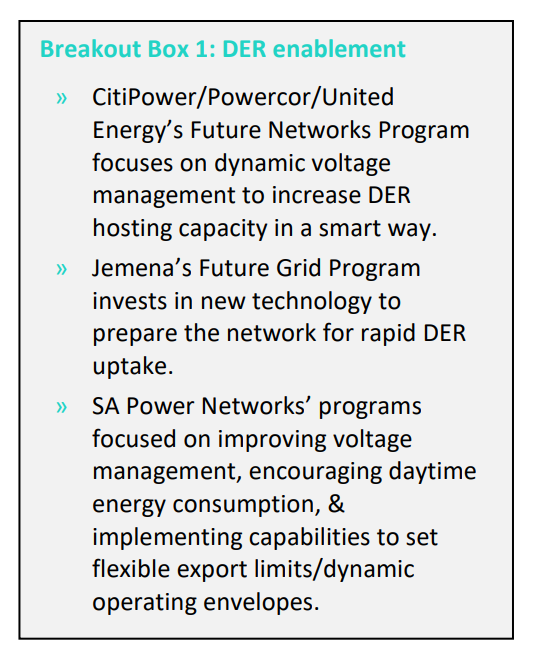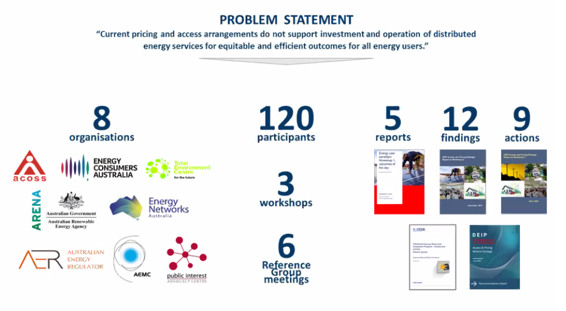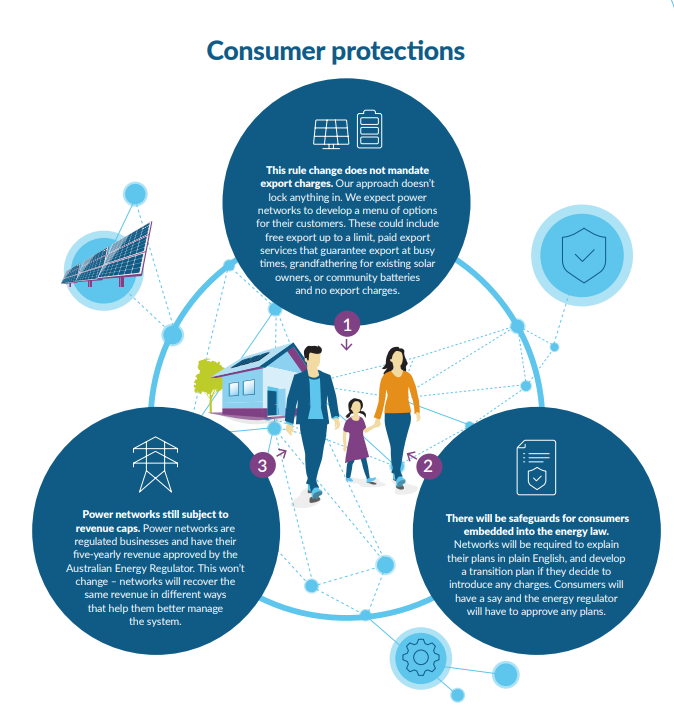Solar reforms will let the sunshine in
The Australian Energy Market Commission’s recent draft determination on access, pricing and incentives for distributed energy resources (DER) will place important new obligations on network businesses to provide export services to support customers’ demand for DER.
Faced with the challenge of meeting customers’ evolving needs in a way that ensures the grid serves all, industry supports the proposed changes. We explain here why the enablement of export charges and rewards as an option is an integral component of the reform, and why it will incentivise battery storage.
The energy transformation
Australia’s energy system is transforming, moving away from large, centralised coal and gas generation to smaller scale dispersed generation that is increasingly renewable. Distributed energy resources (DER) are devices like rooftop solar, batteries and electric vehicles that help our energy system rely less on fossil fuels.
This transformation has changed the role of the distribution network. Traditionally, these networks supplied energy downstream to end-use customers (‘consumption services’). However, they are increasingly being used to export customers’ surplus energy upstream to other customers or the market (‘export services’).
DER create several opportunities for customers, including the ability to sell surplus energy or participate in a virtual power plant. It is a priority for network providers, as the essential infrastructure that connects these technologies, to enable these opportunities.
Distribution network service providers (DNSPs) are increasingly pursuing a range of actions, including investments to improve DER hosting capacity as shown below. However, there are currently no incentives for distributors to enable an efficient level of export, nor any guidance on the service performance levels that they should achieve for DER customers.
Figure 1: DER enablement[i]
This results in a problematic ‘first come, first served’ basis to DER exports, with increasing instances of export curtailment and the application of zero export limits, which financially penalises those DER owners who are prevented from exporting.
The current regulatory framework therefore does not reflect community expectations for DNSPs to efficiently provide export services to support DER.
What are we doing about it?
Born out of the Australian Renewable Energy Agency’s Distributed Energy Integration Program (DEIP), the Australian Energy Market Commission’s (AEMC) draft determination has been a customer-initiated process with consumer groups, renewable groups and networks working together to develop an overall solution for the future.
Figure 2: ARENA DEIP – DER Access and Pricing Work Package
The AEMC’s draft determination rightfully places obligations on DNSPs to provide efficient levels of export services and requires the development of export service performance incentives, providing greater certainty for DER owners about the service levels they can expect.
We’ve previously noted our strong support for the AEMC’s reforms. They are fundamental to enabling the customer-driven transition to distributed energy that is supporting Australia’s move to a low carbon future and driving down wholesale prices for all customers.
Why export charges and rewards?
This package of reforms is modernising the regulatory framework to explicitly recognise export services, and network businesses will have a new requirement to efficiently meet or manage customer demand for these services. The enablement of export charges and rewards as an option is an integral component of the reforms, and central to ensuring that we make best use of infrastructure at the lowest cost for all consumers.
Customers increasingly use the distribution network to export their surplus energy and new investment is being driven by increasing levels of DER penetration. However, given a clause in the National Electricity Rules (NER) that prohibits export charging[ii], all network costs, including the costs for export services, can only currently be recovered from connection charges and charges for consumption services.
Energy Networks Australia therefore strongly supports the AEMC’s proposal to remove NER 6.1.4 (Prohibition of DUOS charges for the export of energy). Recognition within the regulatory framework of the provision of export services to customers is interlinked with the efficient recovery of these costs and cannot be considered in isolation.
If the rule change was made but without removing the restriction on export tariffs, all future network investment in export capacity would be paid for by increasing network consumption tariffs. This would mean that:
- Customers with no DER would pay a higher share of this cost than DER customers, and
- DER customers would have no price signal to reward efficient use of the network, which will tend to result in over-investment in the network in the long term.
There have been suggestions that DNSPs only want to introduce export pricing to increase revenue. This is a myth. Export pricing will be revenue neutral to DNSPs – specific tariff designs do not increase revenue for DNSPs after it has been determined by the Australian Energy Regulator (AER). Instead, export pricing determines how efficient costs are recovered from and between customers. If a DNSP starts to earn revenue from export charges, its customers will see an offsetting reduction in consumption charges.
The rule change will also allow networks to develop two-way export pricing options to reward customers for export where their actions support the grid in managing congestion (export reward) or signal the network costs where their actions add to network congestion (export charge).
This two-way export pricing will incentivise the installation of battery storage – if customers use a battery to delay export until times of peak demand on the network, they will benefit from export rewards (i.e., negative prices) under two-way pricing. Therefore, being rewarded for the flexibility that their battery storage provides.
Consumer protections
A key fact often missing from the debate around this change is that removal of the export charge prohibition clause does not mandate the introduction of export pricing. It enables it as an option for further detailed consultation and design with consumers and stakeholders, including state and territory governments. The implementation of export pricing will be subject to customer and stakeholder support and review and approval by the AER.
Figure 3: Consumer protections[iii]
The NER require DNSPs to manage the customer impacts of changes to network tariffs. DNSPs typically do this on the consumption side by considering transitions of various kinds, and Energy Networks Australia considers these measures will also be required for any export pricing. There will be trade‑offs between faster or slower transitions, and these issues should be subject of close consultation.
If export pricing is pursued as an option, it will be phased in according to the export pricing transition strategy approved by the AER through regulatory reset processes. DNSPs are not looking to introduce export pricing within their current regulatory control periods.
We can’t wait for the future to overtake the system
Future proofing the regulatory framework now can avoid unnecessarily expensive solutions in the future.
The AEMC’s draft determination is a positive example of transparency and collaboration across a broad range of stakeholders. We must not waste this opportunity to facilitate the efficient integration of DER to provide the grid of the future for the benefit of all customers.
[i] ENA, Enabling a distributed energy future, 27 May 2021.
[ii] NER 6.1.4 (Prohibition of DUOS charges for the export of energy).
[iii] AEMC, Factsheet – Have your say: Making room for more solar and new tech energy.




